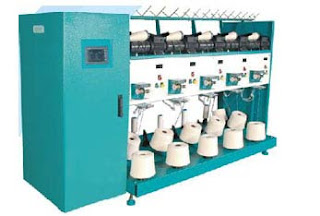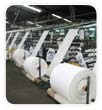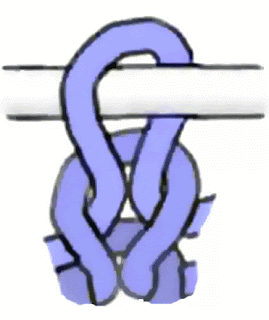Cotton Fiber Properties & The End Uses of Cotton Fibre
Cotton Fiber Properties: Cotton is the Cellulosic fiber and widely used fiber in all over the world. Cotton fiber is very popular due to its several attractive and useful properties.
There are some properties of
Cotton Fibre that are worth mentioning too-
- Comfortable: Cotton fiber has large amorphous portion and this is why the air can be in and out through cotton fiber. So, the fabric made by cotton fiber is quite comfortable to use.
- Soft Hand: Cotton fiber is too much regular fiber and if properly ginned; this fibre can be the best soft hand feeling fibre amongst the others.
- Absorbent: Cotton fiber has high absorbency power and this is why this fiber can be died properly and without any harassment.
- Good Color Retention: If the printing is applied on cotton fiber, it seems it doesn’t spread the color outside the design. So printing efficiency is good on cotton fibre.
- Machine Washable & Dry Cleanable: It is seen that some fibers can’t be dried or washed due to it’s sensitivity and weak fastness properties but in case of Cotton fiber you will have large number of options to choose. You can easily wash the cotton made fabric by machines and even you will be able to dry this fiber by using electronic drier.

- Good Strength: If you want to seek an average strength which might be enough for you; then cotton fiber can be your ultimate choice. The strength of cotton fiber is quite good.
- Cotton Fibre Drapes Well: The drape-ability of cotton fibre is awesome. You can use the cotton fibre made fabric in any kind of wear which needs more flexibility and drapes.
- Sewing & Handling Is Easy: The sewing efficiency on Cotton made fabric is easier and comfortable than other fiber. This is why the demand of cotton made fabric is higher in all over the world.
Uses of Cotton Fibre:
Cotton fiber is a versatile fibre which has wide variety of uses. But the Cotton fibre is mostly used on the
Apparel Industry to make the wearing cloth like Sweaters, Skirts, Shirts, Swimwear, Kids wear, Blouses, Pants, Hosiery and to make other type of dresses.
Properties of Cotton Fibre that needed for cotton Spinning
The following properties a cotton fibre should have to contain of:-
1. Cotton Fibre Fineness:
Fineness is one of the most important parameter determining the yarn quality. This is the best cotton properties that almost all of the cotton importers wants. Cotton Fibre fineness influences the number of fibre in cross section. The finer fibre results the higher no. of fibre in yarn cross-sections. Fibre fineness influences primarily-
a) Spinning limit. B) Lustre. C) Yarn Strength. D) Handle E) Yarn Evenness F) Productivity.
2. Fiber Maturity:
The maturity of cotton fibre defines in terms of the development of the cell wall. A fully mature fibre has a developed cell wall. On the other hand, an immature fibre has a very thin cell wall. A fibre is to be considered as mature fibre when the cell wall of moisture swollen fibre represents 50% to 80% of the round cross section, as immature fibre represents 30% to 45% and as dead when it represents less than 25%.
Immature fibres lead to –a) napping b) loss of yarn strength c) high proportion of short fibre d) varying dyeability. So good cotton properties is to said as matured cotton fibre.
3. Fibre Length:
The average length of spinnable fibre is called staple length. Staple length is one of the most important fibre characteristics. The quality, count, strength, etc depend on the staple length of the fibre. Higher the staple length, higher the yarn quality. Staple length influences –a) yarn evenness b) lustre of the product c) spinning limit d) yarn strength e) yarn hairiness f) handle of the product
The following length grouping are currently used in stating the trade staple or basic cotton properties-
Short Staple: 1″ or less.
Medium Staple: 1 and 1/32 inch to 1 and 1/8 inch
Long Staple: 1 and 5/32 inch to 1 and 3/8 inch.
Extra Long Staple: 1 and 13/32 inch and above.
4. Cotton Fibre Strength:
Toughness of fiber has a direct effect on yarn and fabric strength. Cotton Properties means such type of physical behavior of a fibre. The higher the fibre strength, the higher the yarn and fabric strength. Very weak cotton tends to rupture during processing both in blow room and carding, creating short fibres and consequently deteriorate yarn strength and uniformity. Some significant breaking strength of fibres are-
Polyester >>35 to 60 CN/Tex
Cotton>>>>15 to 40 CN/Tex
Wool>>>>12 to 18 CN/Tex
5. Cotton Fibre Cleanness:
In addition to usable fibre, cotton stocks contain various kinds of foreign matters. Some vegetable matters are- a) husk portion, b) seed portion c) stem portion d) leaf portion e) wood portion.
Some mineral matters are- a) earth b) sand c) dust.
Some other foreign materials are- a) metal fragments b) cloth fragments c) packing materials.
6. Cotton Fibre Elongation:
Elongation is specified as a percentage of the starting length. Textile products without classify would hardly be usable. They must be deformed and also return to the original shape. The fibre elongation should be at least 1 to 2%. The greater crease resistance of wool compared with cotton arises due to difference in their elongation.
Fundamental Idea of Cotton Bale
it is necessary to know about cotton bale. Bale of cotton is the main thing that can enhance your spinning productivity. Cotton bale is brought at blowroom section from the store. Store receives the cotton bale within a loose form form the cotton seller.
Cotton or any staple fibres are received in the form of compressed bales. If the mill is situated very near the cotton growing areas, they situated very near the cotton growing areas, they may receive cotton in loose form. The size, weight, density of bales for cotton varies from country to country. The following table illustrate the variation:

Here a chart i have given, from where you will be able to know about the standard cotton bale. These bale of cotton is mentioned along with their type i,e the source country, dimension which is expressed in inch, weight in pound and density per cubic foot.
Type—–Dimension (inch) –Weight in Lbs—–Density/ Cubic Foot
1. Indian>>>>>>4.1*1.10*1.4>>>>400>>>>>39
2. African >>>>>4.3*2.7*1.10>>>400>>>>>>28
3. Egyptian >>>>4.3*2.7*1.10>>>>>>720>>>35
4. American>>>>4.6*3.4*2.3>>>>>>480>>>2.2
From the above chart it is seen that the American Cotton Bale is mostly standardized and good for quality spinning.
Class About Cotton Breeding, Ginning, Harvesting | Cellulose

Definition of Cotton Fiber:
Cotton Fiber is the backbone of world’s textile trade. Cotton is essential cellulose. It is attached to the seeds of plants of the Mallow Family. Many of our everyday textiles are made by cotton. Cotton fabrics are hand wearing and capable of infinite verity of weave and coloring.
Cotton Breeding:
cotton plant gossypium belongs to the genus malvaceae. The breeds can be classified on a genetic basis and chromosomes in the body cells.
New world types Cotton :-
Gossypium Hirsutaum
Gossypium Brasilence
Gossypium Barbadence
Gossypium Peruvinum
Gossypium Purpurasems
Old world types of Cotton Fiber:
Gossypium Aboreum
Gossypium Nanking
Gossypium Herbaceum
At present time the following are cultivated world wide-
Gossypium Hirsutum-87%
Gossypium Barbadense-8%
Gossypium Arborium + Gossypium Herbaceum—5%
Cotton Fiber Producing Countries:
Now a days cotton is cultivated in approximately 75 countries on an average of 32 million hectors. This is approximately 0.8% of the cultivated serface of the earth. The world wide annual production of ginned cotton is 20 million ton. This is 50% of the textile fibres processed between 4 and 6 million ton of the cotton produced is exported.
The most important producers are:– USA, Russia, Pakistan, India, China, Australia, Sudan, Paraguay, Brazil, Egypt, Mexico, Turkey, Canada, Europe, Etc.
The Process Sequence of Cotton Production / Cultivation:
1. Formation of Cotton Fibre
2. Fibre Growth
3. Ring Growth
4. Effect of Growth Condition( Matured fibre, immature fibre, dead fibre).
Cotton Harvesting:
The process of pick up cotton from the field is known as harvesting. There are two types of harvesting—
1. Manual Harvesting
2. Mechanical Harvesting.
Ginning Cotton:
The process of separating cotton fibres from seeds is called ginning. There are two types of ginning machines. Such as— 1. Saw Gin (for low to medium quality fibres)
3. Roller Gin (For high quality fibres).
Commercial varieties of cotton:
1. Very fine and lustrous—length 2—3 “
2. Average fine and little lustrous—length –1-2”
3. Short fibres or course fibres with no lustrous—less the 1”
Chemical composition of cotton:
Cellulose: 94%
Protein: 1.5%
Wax: 0.5%
Pectin Materials: 1%
Small amount of acids, sugar and pigments: 2%
What Is Cellulose:
Cellulose is and active chemical with three OH groups attached to each glucose inside. Those in the 2 and 3 positions behave as secondary alcohols; the hydroxyl in the 6th position acts as a primary alcohol.
Cellulose is the basis of all plant fibres. It has an empirical formula (C6H10O5)n. t is a polymeric material formed by condensation of glucose.
What is Cotton Fibre | Properties of Cotton Fiber
Cotton is widely used Textile Fiber in Textile Industry. Due to it’s versatile uses; people feel comfort to use Cotton fiber to make fabric. Here is the basic things about Cotton Fiber.
Cotton Fiber:
Cotton is a natural vegetable fibre produced in the cotton plant in many countries of the world even in Bangladesh also. Some important properties of cotton fibres are discussed very briefly below:

Properties of Cotton Fibres:
Length of cotton fiber:
Physically the individual cotton fibres consist of a single long tubular cell. Its length is about 1200-1500 times than its breadth. Length of cotton fibre varies from 16mm to 52 mm depending upon the type of cotton.
Indian cotton- 16-25 mm
American cotton- 20-30 mm
Sea Island- 38-52 mm
Egyptian cotton- 30-38 mm
Fineness of cotton fiber:
Longer the fibre, finer the fibre in case of cotton fibre. It is expressed in term of decitex and it varies from 1.1 to2.3 decitex.
Indian= 2.2-2.3dtex
American= 2.1-2.2 dtex
Egyptian= 1.2-1.8 dtex
Sea Island= 1.0-1.1 dtex
Fineness may be more in case of immature fibre. So it is necessary to express maturity with fineness.
Strength and extension of cotton fiber:
Cotton fibre is fairly among natural fibres in relation to tenacity which is 3-3.5g/dtex. Its tensile strength is between wool and silk fibre but disadvantage is low extension at break which is 5-7%.
Elastic properties of cotton:
Recovery from deformation of cotton fibre, yarn or fabric from applied load is very low. By applying heat it can’t be achieved. This property can be achieved by -1.Chemical treatment to improve crease recovery, but the problem is the materials become harsher due to chemical treatment 2. blending or mixing of cotton with elastic fibre, e.g. polyester, blend ratio depends on the end use of the fabric. The initial modulus is fairly high=0
5 g/dtex (wool=0.25 g/dtex)
Cross-section:
Cross-section of cotton fibre is some what ribbon like. The cell wall is rather thin and the lumen occupies about two-third of the entire breadth and shows up very prominent in polarized light. Fibre cross-section becomes round when mercerized.
Appearance:
Cotton fibre is fairly short, fine and creamy white color. Color of the fibre depends on soil of growth. By adding chemicals in the soil, color of the cotton fibre may be varied.
Crimp:
Cotton fibre is more or less twisted on its longitudinal axis which cab not be seen from out side is called convolution. The twist in the fibre does not to be continuous in one direction i.e. if at first right direction, then left direction. This property of
cotton fibre helps in spinning.



 Bangladesh. This is why Bangladesh is the largest Jute Growing Country in all over the world. Here are some lists of countries who are trying to cultivate Jute and making Jute Fiber.
Bangladesh. This is why Bangladesh is the largest Jute Growing Country in all over the world. Here are some lists of countries who are trying to cultivate Jute and making Jute Fiber.
























